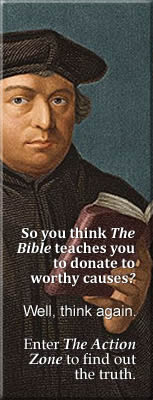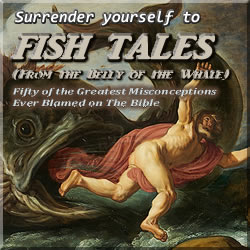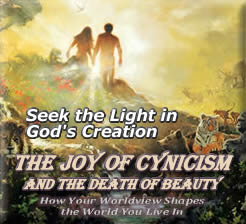The Next Paradigm Shift
A Different Way of Seeing
So ends the “entertainment” portion of our program, as it were. However, before we roll credits, we must segue to one last order of business—the much-anticipated business of what connects all five sacred things and the proof that it conveys concerning God’s control and faithfulness. Usually, the end of a book is reserved for various miscellaneous items that have not quite fit into the main body; and while this may hold true to some small degree, it does not hold true to the big picture of this work as a whole. Whatever you do, then, do not let appearances be deceiving. Rest assured, what follows in no way constitutes your typical appendix—a word that often implies something of relatively little purpose and is therefore best removed. And although what is contained in the next act has no real significance when seen in isolation from all that has preceded it, I can honestly say that what follows constitutes the most important part of our presentation. Why do I say that?
Well, apart from the fact that this is the section where I finally tie all the evidence together in terms of what connects the five things, I say it because Act Three is where I hope to put the final touches of presenting the evidence for the validity of the apocryphal books that I am so convinced are worthy to be ranked amongst the canonical books. Whereas most people in traditional Christian circles might still find it too hard to accept such a possibility, they would, however, be much more inclined to do so if a clear-cut connection could be made between the books in question and those things that they already associate with mainstream biblical truths—things like The Ark of the Covenant, The Shroud of Turin, and The Septuagint Bible. And, quite frankly, to expect otherwise would be the height of folly on my part, especially considering the fact that part of the enigma surrounding their contents have actually occurred as a direct result of God’s own desire to withhold these books until the time when a future generation was to rediscover them.
Story Continues Below
Says Richard Price—the founder and CEO of Academia.edu—on his podcast In Depth With Academia:
Tales of Forever: The Unfolding Drama of God’s Hidden Hand in History is:
To hear Price’s book review of Tales of Forever, CLICK HERE.
To hear Kent and Zen Garcia continue their discussion concerning the implications of the 5,500-year chronology from Adam to Christ as it pertains to the faithfulness of God, CLICK BELOW.
Story Continues From Above
Therefore, keep in mind, I have no objection whatsoever to the general reluctance of most Christians in this regard; in fact, knowing what I know about the unfolding drama of God’s hidden hand in history, I gladly accept a healthy dose of skepticism in all of this. As a matter of fact, it would be downright callous of me if I were to resent anyone who honestly admitted they were still having a hard time accepting these books back into the Biblical Canon. The only thing I do find intolerable, though, is the stubborn unwillingness on the part of any so-called “truth-seeker” to at least open their hearts and minds to the possibility that if—and this is a very important if here—that is, if a sound biblical basis for them can be adequately demonstrated.
After all, it is no great secret that the hardest part of relating to the controversial subject matter contained in a book like this—subjects like scriptural interpretation, biblical chronology, and religious artifacts—is overcoming the psychological hurdles that are the result of a lifetime of skepticism and doubt. But the greatest tragedy of all would be if, once this connection between the lost books in this work and the five sacred things is sufficiently demonstrated, the sheer weight of evidence, along with the added eloquence of persuasion, were disregarded simply because these books were not included in the modern Canon and should therefore be dismissed on that basis alone.
In terms of the entire span of human history, however, this is certainly nothing new. In ages past, nearly every generation has been confronted with one such dilemma or another, whereby what was once thought to be “the truth and nothing but the truth” was challenged, then rocked to its core, and finally overturned by the next “paradigm shift.” A term coined by American physicist Thomas Kuhn, in 1962, paradigm shift refers to a fundamental change that occurs in the basic ideology of science—a change that opens up entirely new vistas of perception that would never have been considered valid until that moment in time. Originally applied only to scientific thinking, this term has since evolved to the point that it is also used to describe changes in numerous non-scientific models or perceptions.







